Prime and Composite Numbers Teaching Resources
Explore prime and composite number worksheets, charts and more resources created for Aussie maths teachers, by Aussie maths teachers!
This collection of resources is aligned with Australian maths curriculum standards, and it's stocked with everything you need to flesh out your lesson plans and help your students understand the unique properties of each category of whole numbers.
Best of all? Each worksheet, task card set and activity has gone through a careful review by a maths teacher on the Teach Starter team to ensure it's ready for your classroom and your students!
Want to learn more about this section of the maths curriculum, or just looking for fresh ideas to engage your students? Read on for a primer from our teacher team, including definitions of prime and composite and lists of each type of number.
What Are Prime and Composite Numbers? Kid-Friendly Definitions
Let's kick things off with a quick definition that you can use to introduce these concepts to your students!
Prime numbers and composite numbers are both types of whole numbers. Both odd and even numbers fall in each category. What sets them apart is how they are affected by division.
- Prime number — This is a whole number that can only be divided by itself and the number 1 because it has no other factors.
- Composite number — A composite number is a whole number that can be divided by numbers other than itself and 1 because it has more than two factors.

What Are the Prime and Composite Numbers From 1 to 100?
Need a handy list of prime numbers up to 100 to use when you're helping students grasp the patterns and relationships between prime and composite numbers? We've got you covered with lists of each type!
Prime Number List
The following numbers are all prime as they have only 2 factors:
- 2
- 3
- 5
- 7
- 11
- 13
- 17
- 19
- 23
- 29
- 31
- 37
- 41
- 43
- 47
- 53
- 59
- 61
- 67
- 71
- 73
- 79
- 83
- 89
- 97
Composite Number List
Once you have a prime number list, the composite number list is fairly simple — it represents all the whole numbers that are not prime! Here are the numbers between 1 and 100 that are composite:
- 4
- 6
- 8
- 9
- 10
- 12
- 14
- 15
- 16
- 18
- 20
- 21
- 22
- 24
- 25
- 26
- 27
- 28
- 30
- 32
- 33
- 34
- 35
- 36
- 38
- 39
- 40
- 42
- 44
- 45
- 46
- 48
- 49
- 50
- 51
- 52
- 54
- 55
- 56
- 57
- 58
- 60
- 62
- 63
- 64
- 65
- 66
- 68
- 69
- 70
- 72
- 74
- 75
- 76
- 77
- 78
- 80
- 81
- 82
- 84
- 85
- 86
- 87
- 88
- 90
- 91
- 92
- 93
- 94
- 95
- 96
- 98
- 99
- 100
Is 1 a Prime Number or a Composite Number?
Your students may notice that the number 1 does not show up on either the prime number list or the composite number list.
It's helpful to let kids know early on in your unit that 1 is a special number that doesn't fit either definition! It is only divisible by itself ... 1!
- Free Plan
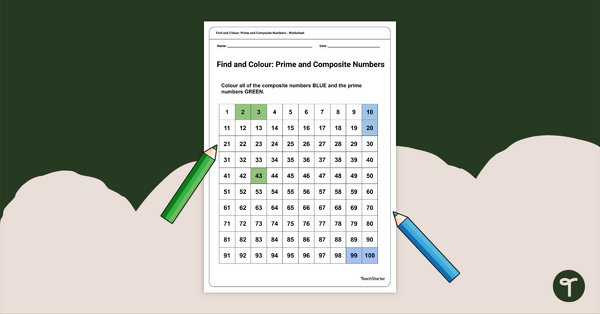
Find and Colour – Prime and Composite Numbers
Encourage your year 6 students to identify prime and composite numbers up to 100 with this free find and colour worksheet.
- Plus Plan
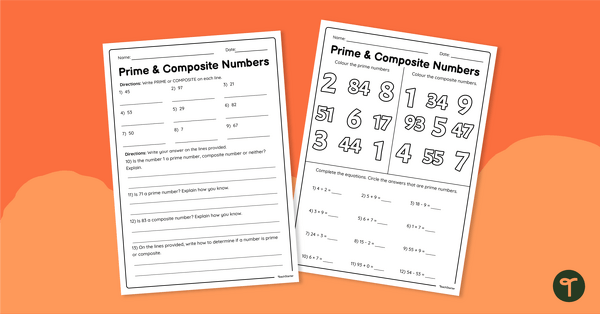
Identifying Prime and Composite Numbers – Worksheet
Use understanding of factors to identify composite and prime numbers with this worksheet.
- Plus Plan
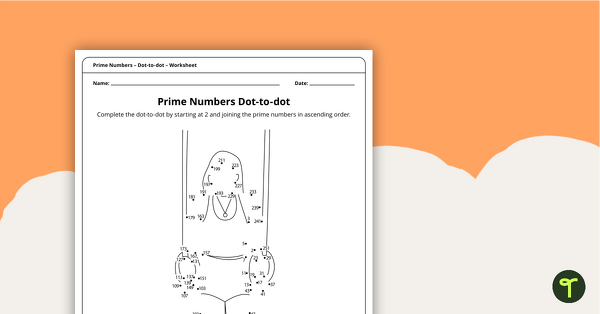
Complex Dot-to-dot – Prime Numbers (Gymnast) – Worksheet
A complex dot-to-dot where students demonstrate their knowledge of prime numbers.
- Plus Plan
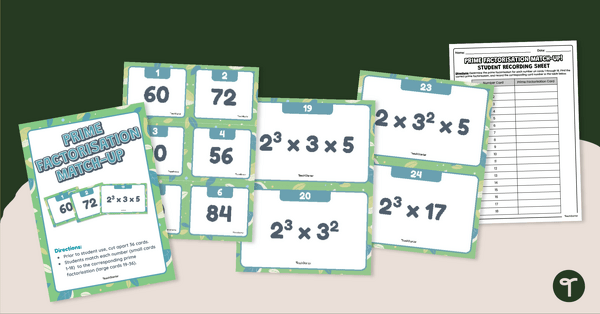
Prime Factorisation Match-Up
Practise how to find the prime factorisation of a number with this match-up activity.
- Plus Plan
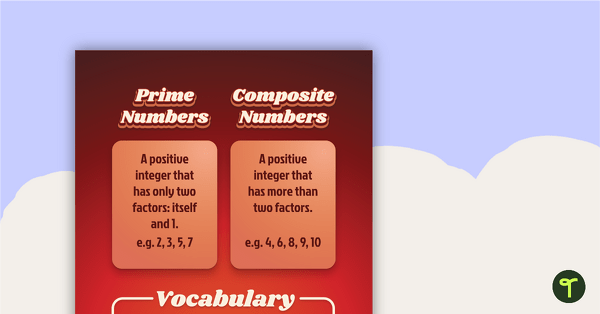
Prime and Composite Numbers Poster
A poster to help students learn the vocabulary associated with prime and composite numbers.
- Plus Plan
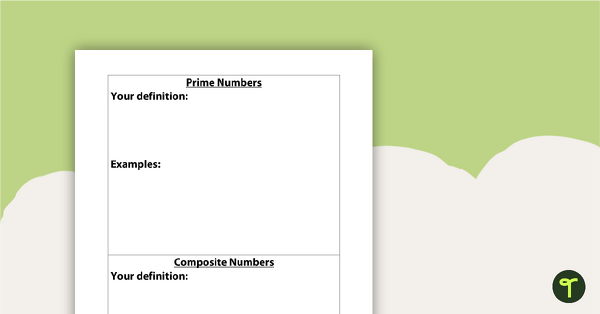
Prime and Composite Number Worksheet
A worksheet to consolidate your students' understanding of prime and composite numbers.
- Plus Plan
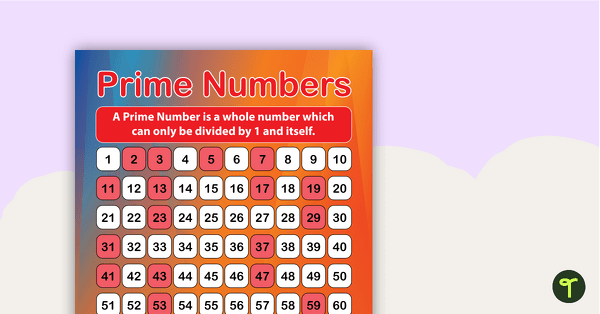
Prime Numbers - Assorted Backgrounds
Prime numbers displayed on a hundreds board.
- Plus Plan
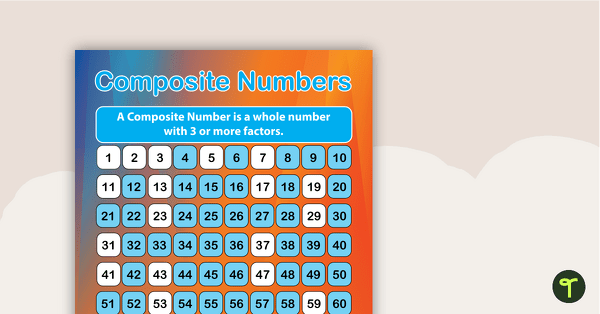
Composite Numbers - Assorted Backgrounds
Composite numbers displayed on a hundreds board.